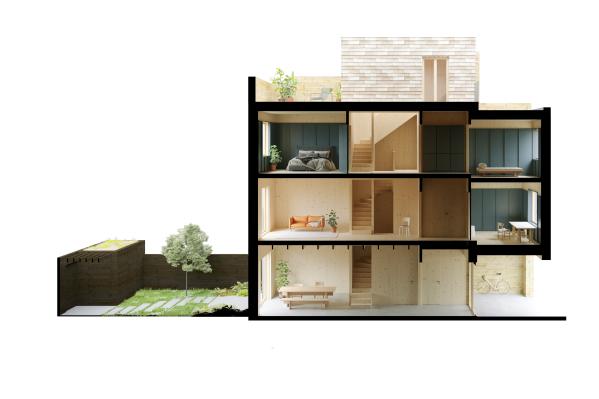Testbedstudio
→ Number of employees: Three partners
→ Founded in: 2000, or maybe actually 2014
→ Office: located in Malmö
testbedstudio.com
@ testbedstudiomalmo
Briefly describe your office
Testbedstudio is an office consisting of three architects who work with ideas, strategies and design on different scales, from new construction and remodelling of residential buildings and offices to interiors, exhibitions and planning of our common public space. Our way of working focuses on collaboration and dialogue, and we jointly own and run the office.
Each architectural project has its own path to realization and is a team effort where a variety of disciplines contribute their knowledge. In that work, we architects defend the whole and the customer's dreams and ambitions, as co-players rather than as dictators of taste. We cherish the frankness and quality that a small organization brings, and strive for a generous exchange of thoughts and views with our clients. Being able to be free in words and thoughts and being able to take full responsibility for our projects and decisions is important to us.
We cherish the outspokenness and quality that a small organization brings, and aim for a generous exchange of thoughts and views with our clients
How do you usually work as an office?
We fill the name Testbedstudio with meaning through test-driven project development. It can be about e.g. simple full-scale prototypes that increase our customers' understanding of proposed solutions. The working method usually generates new common insights and ideas that make the projects more well-founded, which creates value for the client and the user.
How do you want to work in the future?
Of course, we always want to get better at what we do, and to an even greater degree learn from our experiences. In the future, we would like to work more with self-initiated projects and also explore the role of project manager and project owner, but have not stepped out into financial risk-taking yet.
We would also like to develop the office's writing and discussion on the subject of architecture. Because how do you relate as a creative and building professional to today's more or less constant crisis - in terms of both security policy and economics as well as the well-being of people and the survival of our species on this planet. Can we find an approach to ourselves, our business and the subject that is both engaged and sceptical, lighthearted and serious?
How do you see the architect's role in the construction process in Sweden today?
Underutilized.
How would you like to see the architect's role develop in the future?
Of course, the role can and must be developed and broadened, in order to meet future challenges and needs. But the architect is not only a creator but also a consultant among others in a building process, strictly governed by rules, building standards and municipal planning documents. If the role of the architect - and ultimately the built result - is to change, our regulations need to change in parallel. It is needed for us to be able to face both climate threats and social problems with more radical solutions than sustainability certification of buildings with the Breeam standard or designing a change shelf in the general waste room.
What do you think about the architectural assignment as a business model - does it need to be developed or supplemented?
The great opportunity to develop the architectural commission as a business model is about sharing in the project's profit instead of just selling hours. It requires that architects have a greater insight into and opportunities to influence the construction economy, something that can also mean that we are perceived less as cost-driving aesthetes and more as actors responsible for the overall economy of the projects.
Is there anything you think the city could do differently to promote better construction processes?
The legislative and review work should be structured more like a collaboration between the architect/builder and the municipality's officials and committees, as it works in Denmark, for example. In Sweden, there are shortcomings in the coordination between different municipal bodies, a lack of clarity regarding which requirements apply and a weak interest in dialogue regarding the design and interpretation of detailed plans. If such processes become clearer, it can benefit small and new players in property development, who may find it difficult to navigate an unpredictable process. That, in turn, would provide a more diversified market and industry.
.
